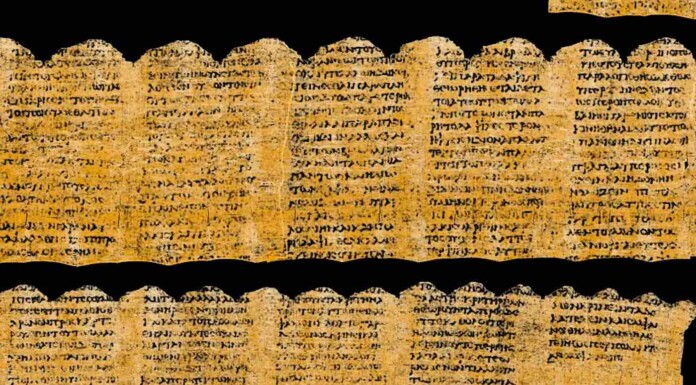The Vesuvius Challenge, which aimed to encourage young people to use AI technology to decode burnt scrolls found in a Pompeii library, had its first winner announced by GNN in October.

Julian Schilliger, Luke Farritor, and Youssef Nader have now claimed the grand prize, and they will each receive an incredible $700,000 bounty for their achievements.
With the use of a rolled-up papyrus scroll that had been reduced to charcoal by the Vesuvius eruption 2,000 years ago, their deep learning program was able to decode four passages, each with 140 characters, at least 85% of which were readable.
Compared to nearly everyone else, whose submissions typically recovered around 30%, theirs was significantly more recoverable.
What was written on the scroll? Though it’s just one page in what looks to be a treatise, it’s thought the Ancient Greek discusses food, music, and how to appreciate life’s little pleasures.
Mr. Nader said of the journey, “It’s been incredibly rewarding.” It was the rush of adrenaline that kept us going. It was crazy. It required twenty-odd hours of work every day. I had no idea when one day came to an end and the next one began.
Leaders in Silicon Valley In March 2023, Daniel Gross and Nat Friedman established the Vesuvius Challenge, which offered cash prizes of up to $1 million to engineers who could teach artificial intelligence (AI) to read carbonized papyrus.
The disputed papyrus scrolls were discovered in a villa that may have belonged to Julius Caeser’s father-in-law in Herculaneum, a city devastated by Vesuvius’ eruption.
Discovered 275 years ago, the collection of 800 scrolls is the only known intact library from the Classical World. Although thousands of clay tablets from the ancient Assyrian and Babylonian kingdoms have been discovered in numerous archives, their durability is generally greater than that of papyrus.
The scrolls cannot be unrolled because doing so would cause them to burn to ash, but some that are kept at the Institut de France were photographed by Gross and Friedman at the Diamond Light Source particle accelerator, which is located close to Oxford. Then, anyone wishing to attempt decoding the scrolls could access these high-resolution CT scans.
Only 5% of the scroll in question is depicted in the picture above.
There were multiple prizes up for grabs, each with a varying threshold for achievement.
As stated on the Vesuvius Challenge website, Youssef Nader, a Ph.D. candidate from Egypt studying in Berlin, was able to read a few text columns back in October and took home the second-place “First Letters Prize.” His output at the time was especially readable and transparent, which made him the team’s obvious leader.
The first person in history to read a whole word from the inside of a Herculaneum scroll was Luke Farritor, a 21-year-old Nebraskan college student and SpaceX intern (ΠΟΡΦΥΡAϹ, meaning “purple”). A few weeks prior to Youssef’s results, he was awarded the “First Letters Prize” in first place for this.
Last but not least, Julian, a robotics student at ETH Zürich in Switzerland, is a three-time winner of the “Segmentation Tooling Prize” for his amazing work on Volume Cartographer. The papyrus areas could now be mapped in three dimensions.
According to a release on the challenge website, “they assembled into a superteam for the Grand Prize, crushing it by creating what was unanimously deemed the most readable submission.”
This quote, from an Epicurean philosopher writing nearly 2,000 years ago, is provided by the papyrologists deciphering the decoded texts: “…as too in the case of food, we do not right away believe things that are scarce to be absolutely more pleasant than those which are abundant.”
The scientists are putting a lot of effort into publishing a paper detailing the scope of their work, and ideally, everyone involved will complete the entire scroll in the near future in addition to other projects.





